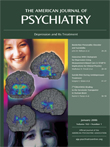What Your Patients Need to Know About Psychiatric Medications
With the explosion of interest in psychotropic medications, and the ready accessibility of information in popular books and the Internet, our patients ask increasingly sophisticated questions about the medications we prescribe. Many of these questions emerge from a level of knowledge that is highly—but not necessarily correctly—informed. One problem is that a good deal of the material that is consumed by the public comes from people who may not be authoritative, some of whom have personal or political axes to grind. Patients can search databases such as Medline or read the Physicians’ Desk Reference, but these sources contain more data than most patients can absorb and evaluate.
This concise and information-packed book coauthored by two prominent leaders in psychiatry and a colleague in psychiatric pharmacy is an answer to psychotropic information (and misinformation) overload. In a readable and accessible format, the authors provide essential data about all of the currently available psychiatric medications. Following a brief introduction to the class of drug (e.g., antianxiety drugs, mood stabilizers), the authors provide information on mechanisms of action, applications, available preparations, dosing, common side effects, adverse reactions, drug interactions, use in pregnancy and breastfeeding, overdose, and how to take each medication. The book manages to provide just about everything a patient needs to know about each medication in just 4 pages. Space is provided at the end of each section for notes as patient and prescriber discuss the medication. A handout on each drug can be prepared by copying the page in the book or by printing it out from the CD provided, which contains a PDF of the book.
This book will be useful for clinicians who prescribe psychotropic medications in any setting, and it will be informative for their patients. It will be equally useful in nonpsychiatric settings, where it will ensure that patients are adequately informed about their treatment, and in psychiatric settings, where the handouts can serve as a source of authoritative data that patient and physician can expand upon. The authors are to be commended for producing such a universally useful volume.
In a book that is not encyclopedic, experts may disagree on what is and is not essential, but patients will agree that most of what is contained here is useful. Since information continually changes and new medications emerge (e.g., eszopiclone had not been released at the time this book was published), a future edition might provide periodic electronic updates and a means of adding notes to the electronic version. Each section has an engaging picture of a capsule in the title banner that might be changed to a picture of one or more of the actual pills available for the medication covered in that section. Regardless of editorial changes, What Your Patients Need to Know should become a valuable resource for practitioners and their patients.



